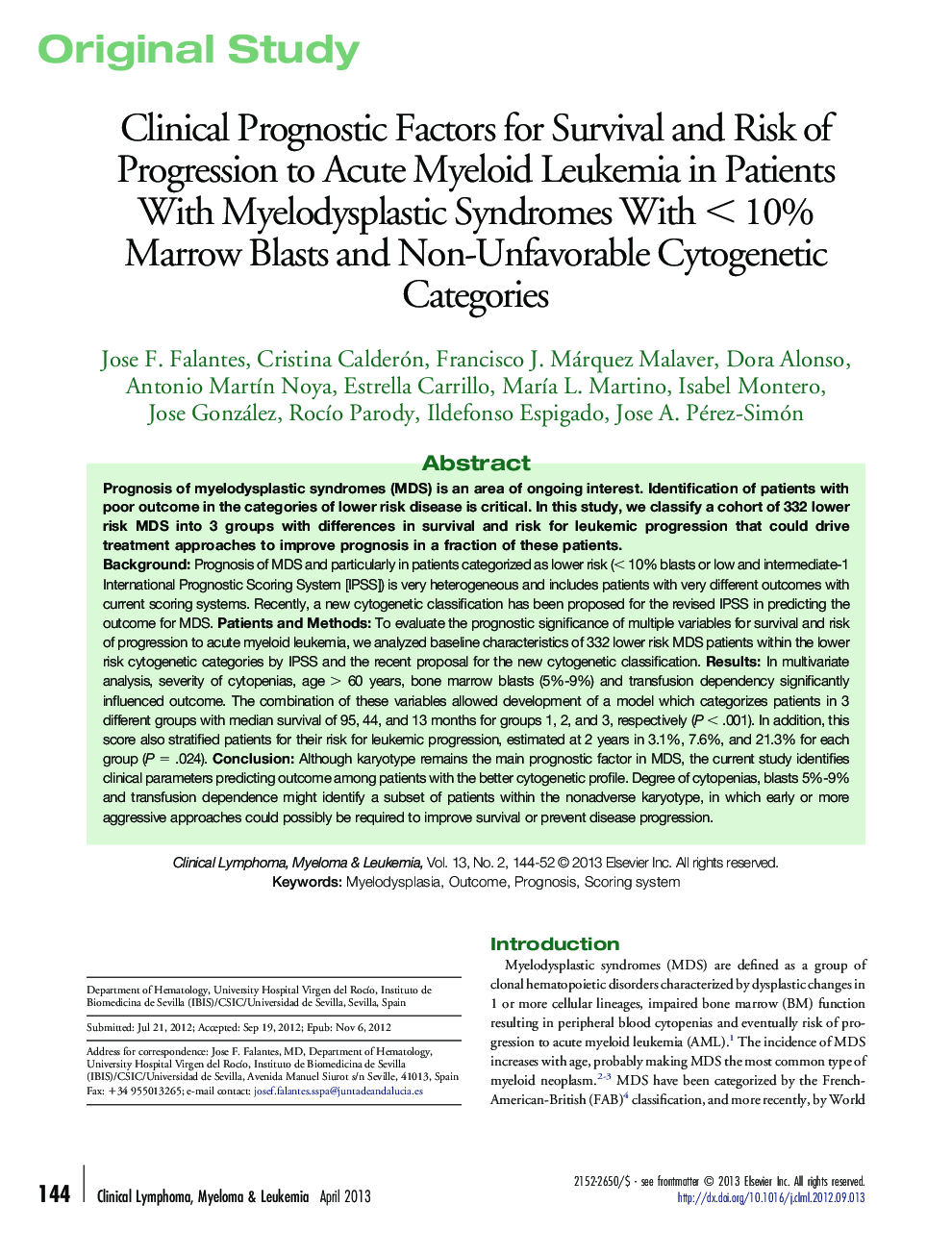| Article ID | Journal | Published Year | Pages | File Type |
|---|---|---|---|---|
| 2754581 | Clinical Lymphoma Myeloma and Leukemia | 2013 | 9 Pages |
BackgroundPrognosis of MDS and particularly in patients categorized as lower risk (< 10% blasts or low and intermediate-1 International Prognostic Scoring System [IPSS]) is very heterogeneous and includes patients with very different outcomes with current scoring systems. Recently, a new cytogenetic classification has been proposed for the revised IPSS in predicting the outcome for MDS.Patients and MethodsTo evaluate the prognostic significance of multiple variables for survival and risk of progression to acute myeloid leukemia, we analyzed baseline characteristics of 332 lower risk MDS patients within the lower risk cytogenetic categories by IPSS and the recent proposal for the new cytogenetic classification.ResultsIn multivariate analysis, severity of cytopenias, age > 60 years, bone marrow blasts (5%-9%) and transfusion dependency significantly influenced outcome. The combination of these variables allowed development of a model which categorizes patients in 3 different groups with median survival of 95, 44, and 13 months for groups 1, 2, and 3, respectively (P < .001). In addition, this score also stratified patients for their risk for leukemic progression, estimated at 2 years in 3.1%, 7.6%, and 21.3% for each group (P = .024).ConclusionAlthough karyotype remains the main prognostic factor in MDS, the current study identifies clinical parameters predicting outcome among patients with the better cytogenetic profile. Degree of cytopenias, blasts 5%-9% and transfusion dependence might identify a subset of patients within the nonadverse karyotype, in which early or more aggressive approaches could possibly be required to improve survival or prevent disease progression.
